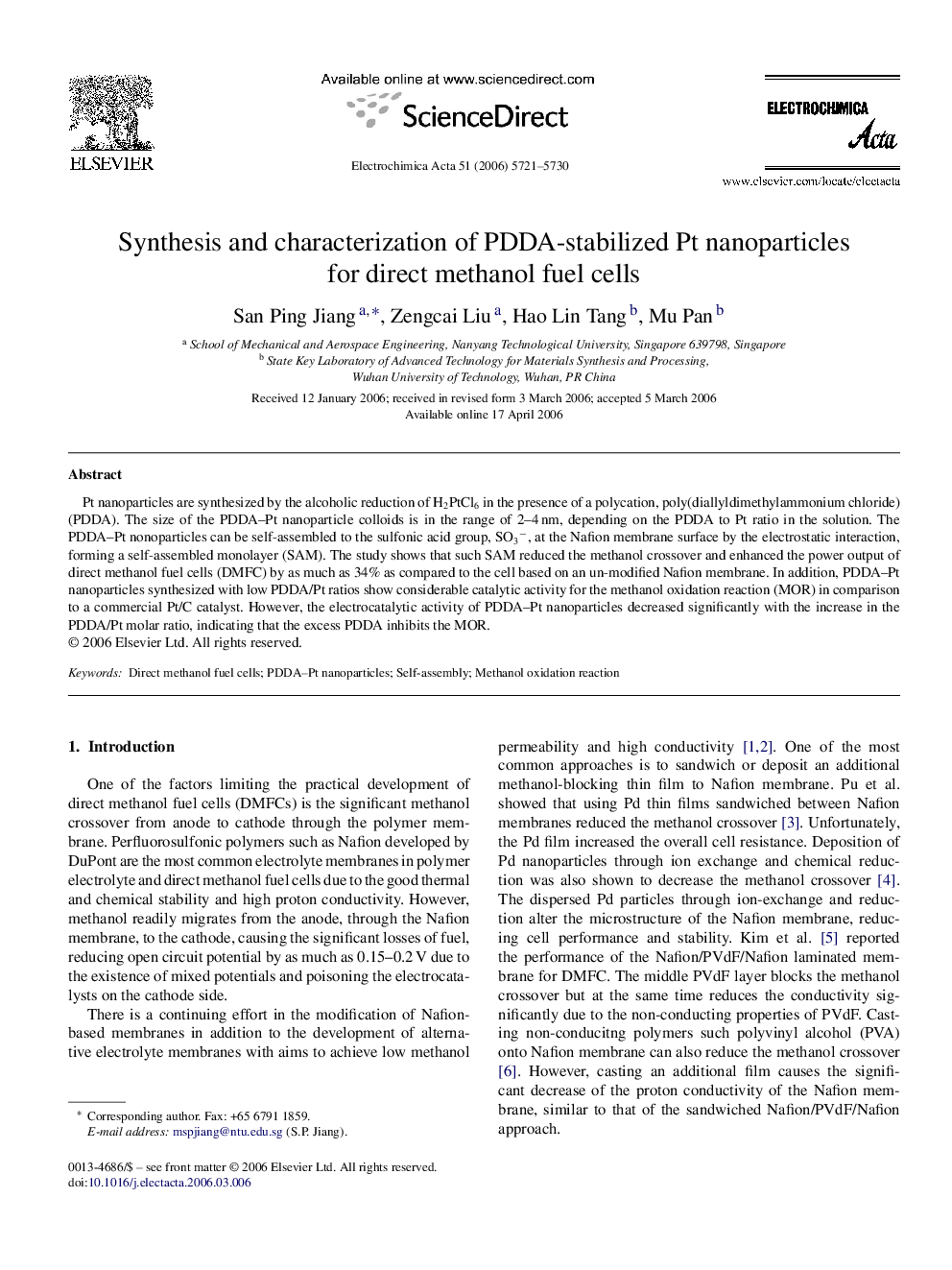| Article ID | Journal | Published Year | Pages | File Type |
|---|---|---|---|---|
| 194657 | Electrochimica Acta | 2006 | 10 Pages |
Pt nanoparticles are synthesized by the alcoholic reduction of H2PtCl6 in the presence of a polycation, poly(diallyldimethylammonium chloride) (PDDA). The size of the PDDA–Pt nanoparticle colloids is in the range of 2–4 nm, depending on the PDDA to Pt ratio in the solution. The PDDA–Pt nonoparticles can be self-assembled to the sulfonic acid group, SO3−, at the Nafion membrane surface by the electrostatic interaction, forming a self-assembled monolayer (SAM). The study shows that such SAM reduced the methanol crossover and enhanced the power output of direct methanol fuel cells (DMFC) by as much as 34% as compared to the cell based on an un-modified Nafion membrane. In addition, PDDA–Pt nanoparticles synthesized with low PDDA/Pt ratios show considerable catalytic activity for the methanol oxidation reaction (MOR) in comparison to a commercial Pt/C catalyst. However, the electrocatalytic activity of PDDA–Pt nanoparticles decreased significantly with the increase in the PDDA/Pt molar ratio, indicating that the excess PDDA inhibits the MOR.
